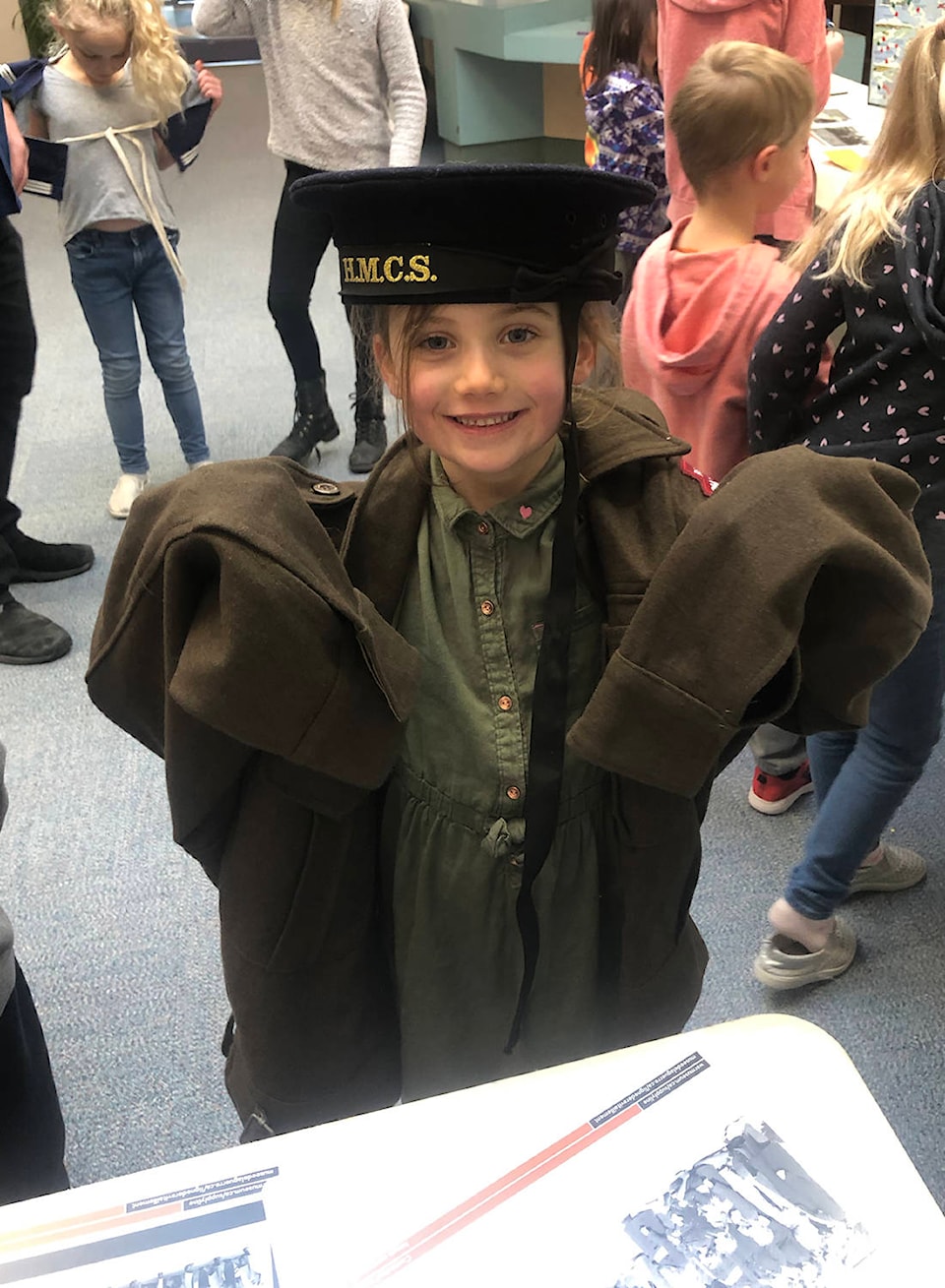Students at West Boundary Elementary School got a rare visit from a national museum last month, when a box of Second World War memorabilia arrived in teacher Angela Bragg’s classroom from the National War Museum in Ottawa.
“Once you open a box, there are four sections,” Bragg explained. “It’s like a box of chocolates – everything in it is a surprise!”
From propaganda to paraphernalia and get-ups, students are allowed to grasp, poke and even wear the garments they received on load from the museum. This year, students got to try on military hats, a woman’s naval uniform and a men’s battle dress uniform.
A “big hit” for the kids was the sweetheart jewelry that the museum had tucked into West Boundary’s box.
To explain it to her students, Bragg told her Grade 4’s and 5’s that it was “jewelry that the men would send back homes to their wife or spouse or girlfriend so that they could remember them that they were fighting in the war and that they still had feelings for them and that they were hoping to return.
“I think they have that romantic notion that they like the idea of somebody going off and sending home memento and then returning home with it,” Bragg said of her students.
Having a Remembrance Day shortly before the box arrived also helped the students connect with what they were finding. Among those who attended was Paul Lautard, a Second World War veteran who left an impact on Bragg’s pupils.
“The kids were super excited to see him because they connected the idea of Mr. Lautard with the box that was about to come to their school,” Bragg said. The students also recalled Lautard’s service badges worn at the ceremony to those they discovered in the war museum’s collection. Two students also brought in their own family treasures from great-grandfathers who served in the Second World War.
Where the kids have already had to pile into school buses to make the hours-long treks to museums before for field trips, Bragg said that the boxed history idea can have a big impact on more rural classrooms.
Not only does the mail-in museum bridge distance, but, Bragg said, “Unlike museums where you can’t touch anything, these are boxes where you can touch everything, try it on, interact with it and put it on your friends.”
@jensenedw
Jensen.edwards@grandforksgazette.ca
Like us on Facebook and follow us on Twitter.
